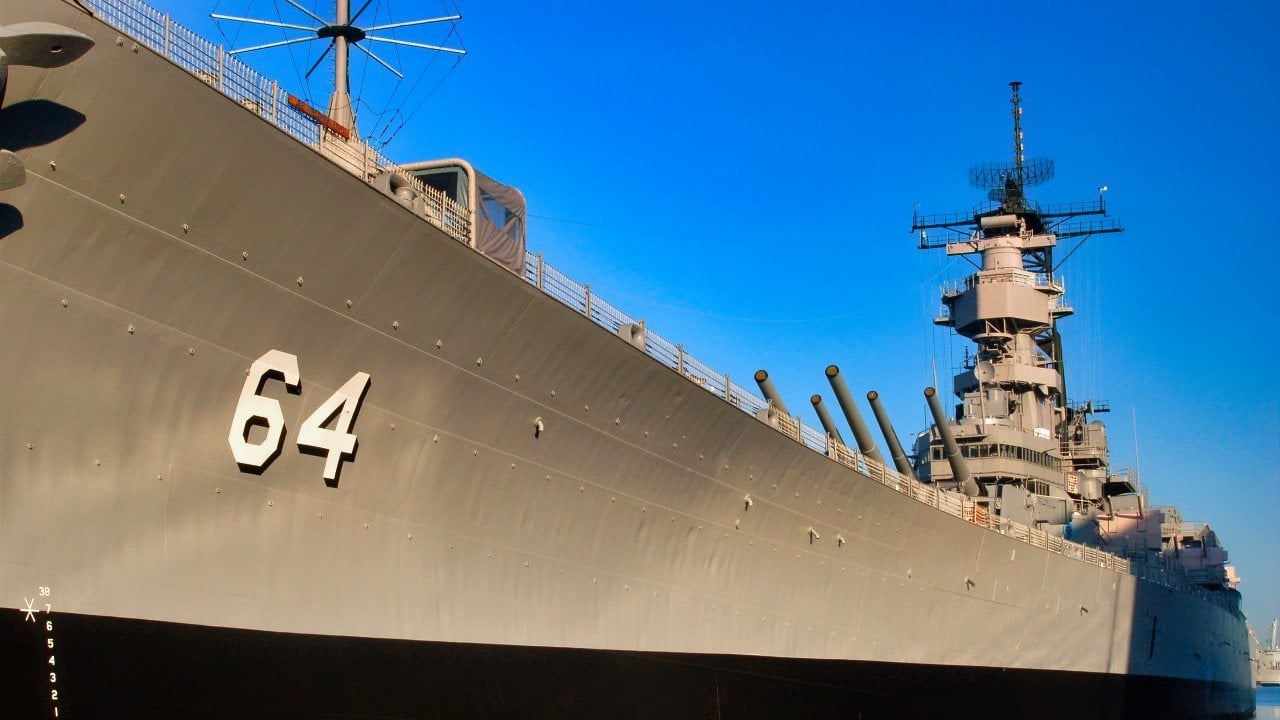Summary and key points: The Iowa-class battleships, the last of their kind, symbolize the end of the battleship era. Commissioned during World War II, these steel giants boasted impressive firepower with 16-inch guns and an exceptional speed of up to 35 knots.
– They were developed to support the US Navy’s carrier battle groups and combined heavy armor with maneuverability.
– Despite their dominance in the 1940s, battleships became obsolete due to technological advances, leading to their decommissioning in the late 1990s.
– They were modernized with modern missiles and systems in the 1980s and saw action in the Gulf War, but were eventually decommissioned, marking the end of an iconic naval story.
Iowa-class battleships: The end of a legendary naval era
For the U.S. Navy, the Iowa-class battleships represent the final battle cry of one of the most effective weapons systems in human history.
Battleships, steel giants with impressive firepower, entered service in the last decades of the 19th century and dominated the seas until the end of World War II. Technological advances and the introduction of aircraft carriers revealed the weaknesses of battleships and made them a liability.
But before the concept of carrier battle groups made these steel giants obsolete, the Iowa-class battleships showed the world why battleships ruled the seas for decades.
The Iowa-class battleships
The Navy built and commissioned four Iowa-class battleships: the eponymous USS Iowa, the USS New Jersey, the USS Missouri, and the USS Wisconsin.
Two more warships, the USS Illinois and the USS Kentucky, were laid down but never left their shipyards and were canceled.

As for the main armament, the Iowa-class battleships carried three turrets, each with three 16-inch Mark 7 guns. Two turrets were located forward and one aft of the warship. The 16-inch (406 mm) Mark 7 gun could fire high-explosive or armor-piercing shells to a range of more than 23 nautical miles (about 27 miles). These guns were massive, weighing nearly 270,000 pounds each. Their shells were also enormous. Each high-explosive shell weighed nearly 2,000 pounds, while the heavier armor-piercing shells weighed about 2,700 pounds.
As for secondary armament, the Iowa-class battleships were equipped with two 5-inch (127 mm) Mark 12 guns in closed base ring mounts on the starboard and port sides of the warship. These guns were used primarily for air defense—American warships had to deal with the deadly Japanese kamikaze pilots in the Pacific—but could also attack sea and ground targets. For pure air defense purposes, the Iowa-class battleships carried 20 quadruple 40 mm guns and 49 single 40 mm Bofors guns, for a total of 129 40 mm anti-aircraft guns.
With a length of 860 feet and a draft of 37 feet, the Iowa-class battleships were an impressive size.
But what made the Iowa-class battleships so remarkable was their speed. They were designed for speed so they could keep up with the emerging concept of carrier battle groups. As a “fast battleship,” the Iowa class emphasized speed without compromising on firepower or armor. Despite weighing 58,500 tons, ships of this class could reach speeds of up to 35 nautical knots (40 miles per hour) with a light load and 33 nautical knots (38 miles per hour) with a standard load. That’s an impressive speed for a warship designed and built in the 1940s. Modern warships like the Arleigh Burke guided missile destroyers can reach speeds of 30 nautical knots (or 35 miles per hour) despite decades of additional technology.
After the end of World War II, the U.S. Navy concluded that battleships were a liability rather than an asset. In a series of refits that continued into the 1980s, the Iowa-class battleships were modernized with new electronic systems, Tomahawk cruise missiles, Harpoon anti-ship missiles, and Phalanx CIWS machine guns. Some ships of this class fought in the First Gulf War, but were all decommissioned by the late 1990s.
About the author
Stavros Atlamazoglou is a veteran defense journalist specializing in special operations and a veteran of the Greek Army (military service with the 575th Marine Battalion and Army Headquarters). He holds a BA from Johns Hopkins University and an MA from the Johns Hopkins School of Advanced International Studies (SAIS). His work has been featured in Business Insider, Sandboxx, and SOFREP. Email the author: (email protected).
Image credit: Creative Commons.

